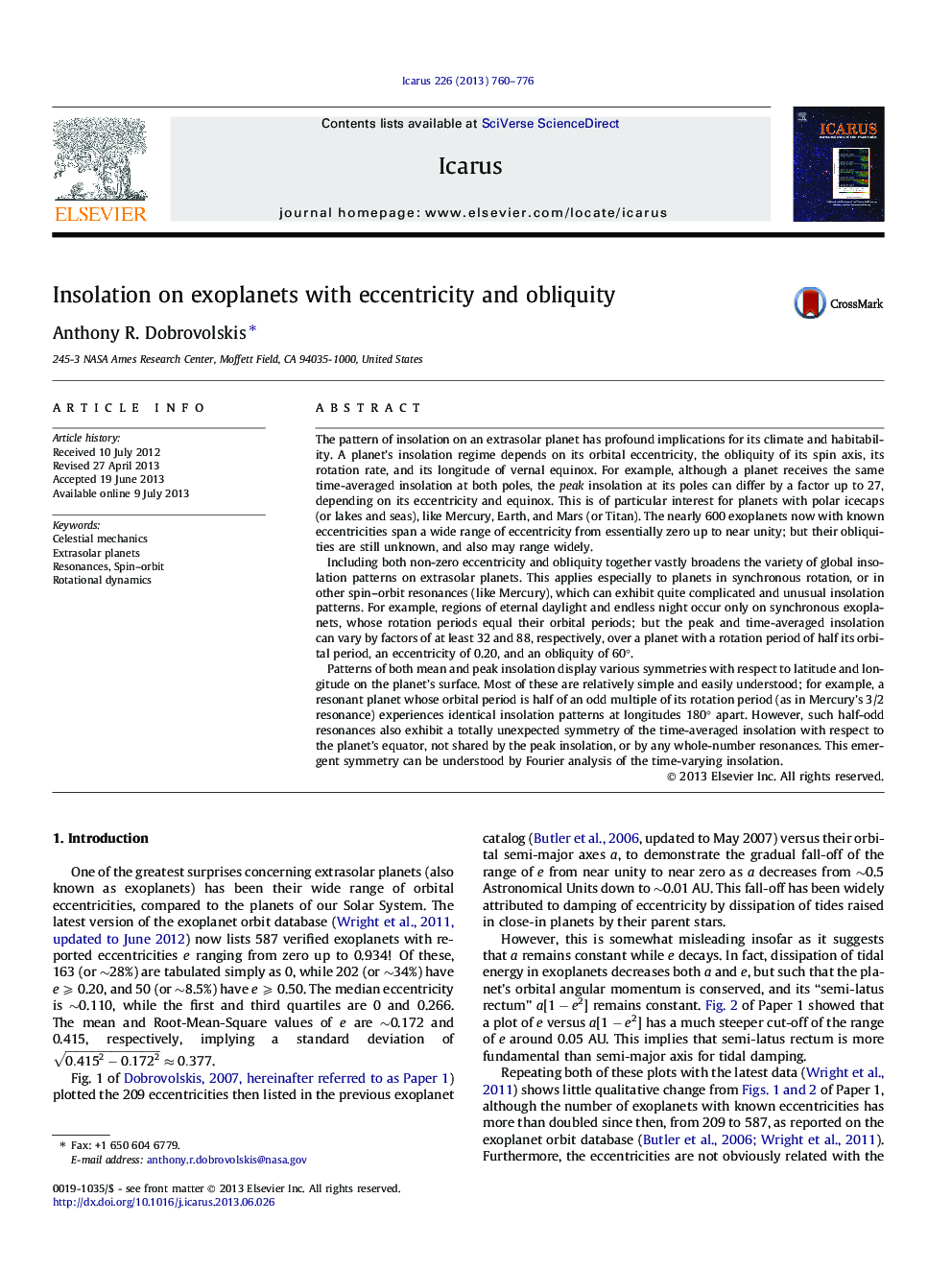| Article ID | Journal | Published Year | Pages | File Type |
|---|---|---|---|---|
| 10701339 | Icarus | 2013 | 17 Pages |
Abstract
Patterns of both mean and peak insolation display various symmetries with respect to latitude and longitude on the planet's surface. Most of these are relatively simple and easily understood; for example, a resonant planet whose orbital period is half of an odd multiple of its rotation period (as in Mercury's 3/2 resonance) experiences identical insolation patterns at longitudes 180° apart. However, such half-odd resonances also exhibit a totally unexpected symmetry of the time-averaged insolation with respect to the planet's equator, not shared by the peak insolation, or by any whole-number resonances. This emergent symmetry can be understood by Fourier analysis of the time-varying insolation.
Related Topics
Physical Sciences and Engineering
Earth and Planetary Sciences
Space and Planetary Science
Authors
Anthony R. Dobrovolskis,
